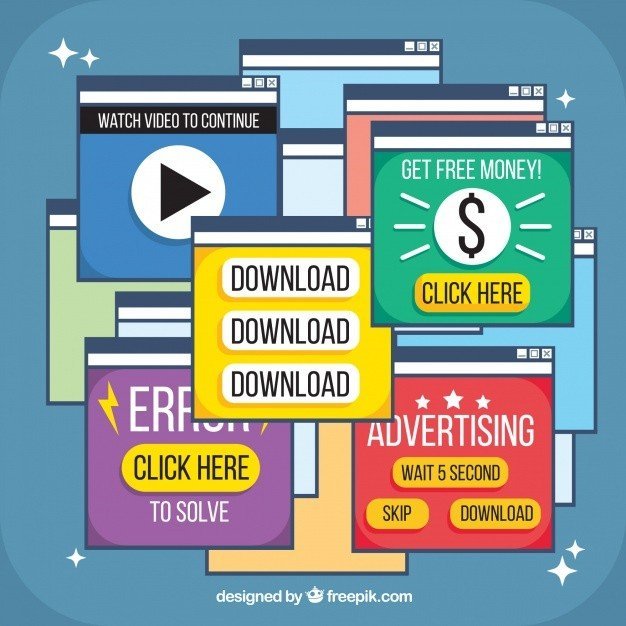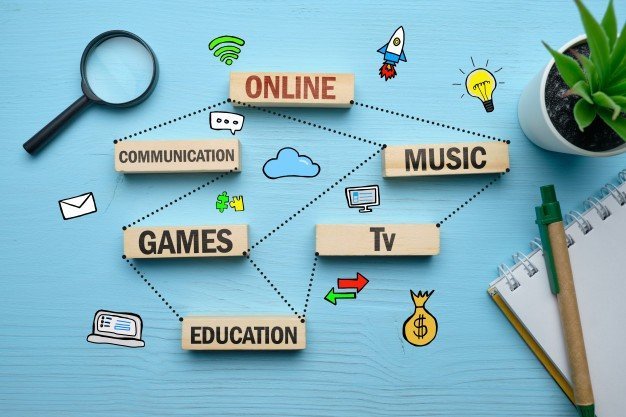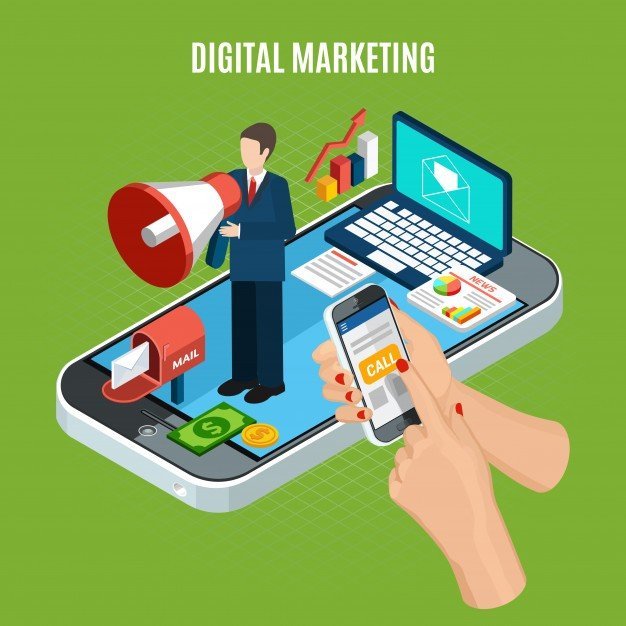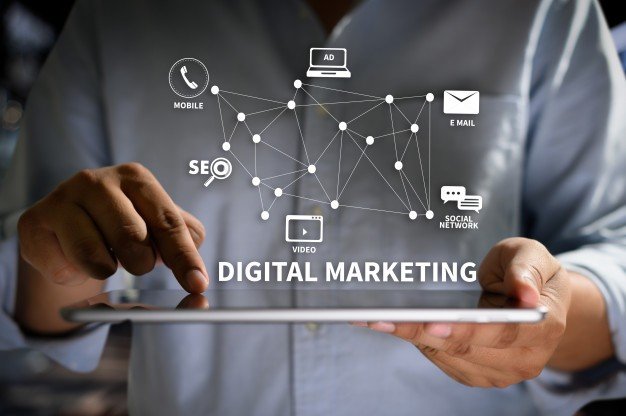The digital revolution that has swept through retail and marketing continues to grow, with sophisticated solutions emerging to address continuously changing customer behavior. Furthermore, the Covid-19 epidemic has accelerated patterns that have been playing for some time.
Most notably, due to pandemic-related lockdowns and limitations, more consumers are skipping brick-and-mortar stores in favor of eCommerce platforms, quickly speeding a trend that has been playing out for many years.
Benchmarks for Ad Fraud, Viewability, or Ad Blocking in 2021
CMOS and top marketers frequently ask me for standards. It’s 2021, they want to know if their “digitally transformed” efforts are outperforming others. Benchmarking is useful; however, keep in mind that they are typically extrapolations and averages and hence do not effectively depict the extremes (e.g., how bad it could be).
This post will discuss ten items, out of many, five of which are forms of ad fraud and five additional sub-optimal aspects of digital marketing campaigns that must be fixed for digital marketing to function effectively.
MANY DIFFERENT forms OF FRAUD

Non-Human Traffic (NHT) and Invalid Traffic (IVT) (NHT)
Bots are software programs remotely managed by “botmasters” to load webpages, imitate mouse movements, page scrolling, and clicks to defeat fraud detection. Bots generate millions of ad impressions out of thin air by loading more sites, which they sell in the billions through ad exchanges to naive advertisers searching for enormous numbers, low prices, and great performance.
Bots can also be created using mobile emulators to simulate downloading, installing, and using mobile apps to commit ad fraud and engage in other nefarious activities.
Including:
- harvesting logins or passwords,
- recording touch events or motion, and
- secretly listening and recording private conversations.
Remember you accidentally gave the flashlight app permissions to turn on the microphone when you installed an app and accepted permissions without checking. SIVT benchmark: 42% (high 100%, low 3%)
Spoofing a domain name
Fake sites can spread with all of that bot traffic accessible for purchase with a credit card from thousands of traffic merchants online. They don’t have to wait for humans to find them and visit their locations. They can buy all their traffic and execute a simple “arb”—buy cheap, sell high. If they acquire the traffic for $1 CPMs and sell the advertisements for $10 CPMs, they profit $9.
Consider putting ten adverts on the same page, or 100, or 1,000. Fake sites just “pretend” to be prominent sites such as nytimes.com, wsj.com, and espn.com and readily defeat fraud detection, particularly those that attempt to do pre-bid blocking. For example, if the tech sees nytimes.com in the bid request, it will accept it, even if it is the bogus site purporting to be nytimes.com (also known as “domain spoofing”).
Pixel Stuffing and Ad Stacking
The goal of fraudsters is to gain as much money as possible as quickly as possible, so why stop with simply the phony traffic and false sites mentioned above?
Why not stack ten ads on top of each other in the same ad slot, or twenty, or fifty?

That significantly increases the amount of advertising they can sell for each page load driven by bot traffic. So why not send 50-80 duplicate bid requests for each “ad opportunity”?
As a result, advertisers bidding on ad opportunities fail to de-duplicate the bid requests and mistakenly bid against themselves, causing bid prices to rise artificially.
Naturally, this means that the bogus sites will make more money.
And why waste 300×250 pixels (the area for a true display ad) when you can fit everything into a 1×1 pixel ad slot (“also known as pixel stuffing”)? In the same amount of space, you may obtain 75,000 advertisements (300 x 250).
Have you ever wondered why your browser appears to be extremely slow on some websites?
Pop Traffic and Forced Redirects
Fraudsters can be impatient; they don’t like waiting for humans to visit their sites, so they force them to do so. How do they accomplish this? Through the use of forced redirects, pop-ups, or pop-unders. Human users do not initiate any of these actions.
Malvertising (“malicious ads”) is used to perform the redirection done with malicious code on web pages or sent into ad spaces. Similarly, pop-ups and pop-unders load pages that the human user did not want to visit. These page loads can be utilized for ad fraud and other forms of fraud, such as cookie stuffing and affiliate fraud.
Forms OF NON FRAUD

Viewability
Viewability measurement is something that every marketer has paid for.
But did you know that:
- fraudsters frequently falsify viewability measurements
- typical viewability measures are wrong, and
- can you assess viewability for free using ordinary javascript in analytics?
Yes, you can save a lot of money by not hiring a viewability measurement company.
Common sense should inform you that an ad has no “opportunity to be seen” if the browser tab is not active (the one being looked at by the human user). If the browser is minimized, or if the browser is hidden behind another software on the user’s computer, such as Word or Powerpoint.
Viewability measurement suppliers, on the other hand, do not check for these easy things. Hence their measurements are wrong. And fraudsters can readily modify their measurements.
Why are you still paying for viewability measurement vendors when viewability is included for free in analytics and detectable using three standard javascript parameters:
- visibility state,
- intersection observer, and
- hasFocus—that are available in all browsers?
Benchmark: 31% viewability (high 42%, low 22%)
Ad-blocking software

Humans despise advertisements, and even if they don’t, they are irritated by the volume and relevance of advertisements. But, unfortunately, only the advertisers and the ad tech companies that sold them their snake oil ad targeting capabilities believe their ads are targeted and relevant.
As a result, several people installed adblockers to prevent adverts and the concealed tracking that comes with them. Humans block ads, but bots don’t because it’s their job to make advertising load so they can make money.
As a result, every advertiser displaying advertising through programmatic channels is displaying ads disproportionately to bots. Benchmark: 10 to 19% ad blocking (high 27%, low 8%)
Dayparting, timing, and frequency limitations are all options.
Another issue with letting algorithms spend your money is that you won’t notice trivial things like the fact that all of your advertisements are used up between midnight and four a, leaving few to no advertisements to be broadcast during waking hours, when humans are online and using mobile devices.
You also won’t know if your media agency neglected to establish pace or frequency caps, so your advertising is unpleasant because the same ad is shown to the same person hundreds of times. Again, these are not ad fraud, but they are definitely suboptimal for your digital marketing.
Drops in the number of bids won, advertisements served, and the advertising displayed
Do you know how many of your advertisements were actually seen by humans? Have you ever noticed an unfilled ad slot scrolling by as you scroll down a mobile device’s homepage or feed? Yes, because it takes so long to request, bid, serve, and display an ad on the screen, most users have already scrolled away the ad slot and thus never see the ad.

For example, if you target Australia online pokies, which is a very narrow audience (targetted by country and not only in the iGaming segment, but specific game). This means, if you want to target this audience, you will pay more since it’s really narrow and extremely specific. However, this also means that the pool of potential clients could be small, but it will convert better because it’s so relevant.
Is that a fruitful ad for you?
What about the “gaps” between bids won and advertising served?
An ad is expected to be served for every bid you won and paid for. What if a quarter to half of your adverts are never seen? What if they were served but never arrived in the device and were never shown on the screen? (e.g., slower wireless bandwidths mean greater discrepancies here). You paid for all of your bids, but just half or less of them were served and showed on screen.
Poor Targeting
You pay more for targeting, sometimes a lot more. US casino sites, for example, are an extremely expensive audience category ($100+ incremental CPM). But did you know that such audiences were derived from website traffic patterns?

Users who visit these websites, for example, are likely to be gamers and gamblers. As a result, those anonymous users, represented by third-party cookies, are included in an iGaming audience segment.
But what if bots appeared to browse the same websites as humans?
Not only do the inferred audience groups imply that the targeting is not very accurate, but bot activity also skews this, resulting in advertisers paying higher CPMs to target bots posing as physicians.
What’s the big deal?
When you evaluate the ten points listed above, you will immediately understand that the percentage of any dollar spent in programmatic channels that can be termed “productive” is in the single digits—say, 1%.
And common sense will tell you that in order for the great creative to make an impact and produce business outcomes for you, your ad must be served and displayed on a screen, the human must not have scrolled past it, and so on.
Perhaps you should also try placing such adverts directly on the websites of good publishers—you know, the ones with genuine human audiences—so that the amazing creative may work its magic? Then, you’d save a lot of money (paid to ad tech suppliers), save a lot of risks (of ad fraud), and eliminate stupid suboptimal things when algorithms spend your money (like all ads used up by 4a).
Disguising, tampering, and falsification are all examples of deception.
Bad individuals are also good at hiding their trials so they can continue their fraud activities for longer periods of time without being caught. For example, they perform simple things like route their bot traffic through residential proxy services to make data center traffic look to be domestic.

This circumvents typical fraud detection methods. Furthermore, the bots used to generate bogus traffic also generate bogus clicks, making the advertising appear to be “performing” very well. This dupes advertisers into redirecting more ad dollars to bogus and fraudulent websites.
Fraudsters can also change or tamper with viewability metrics, making unsellable “rotten apples” appear to be sellable “fresh apples.” For example, Newsweek was busted for tampering with viewability metrics, despite the fact that every other fraudulent site utilizes this same methodology to ensure that all of the advertising they sell are 100 percent viewable 100 percent of the time.
Finally, fraudsters can simply manipulate placement reports in order to make advertising appear to have run on legitimate sites when they did not or when no advertisements were placed at all.
Advertisers who are aware of the above or who do not have analytics in place to check for all of these factors are unlikely to be ripped off. However, they are obviously being taken advantage of, and the con artists are laughing all the way to the bank.
“As a result of these dramatic adjustments, many merchants are scrambling to efficiently service customers through alternative channels. Retailers who prioritized physical locations and face-to-face interactions over omnichannel strategy struggled to adapt”
according to McKinsey experts in a report.
However, the quick shift to eCommerce isn’t the only development that marketers must deal with. Social shopping, in which consumers study products on social media before making a purchase, is also growing in popularity. According to the e-commerce agency Absolunet, over 30% of consumers claimed they would shop straight through social media platforms like Facebook or Instagram.
Customers are also looking for more tailored offerings. As a result, brands have been attempting to tailor the consumer experience based on individual preferences, interests, and behavior by embracing digital solutions such as machine learning.
New marketing solutions
To keep up with changing consumer behavior, brands will need to rethink their omnichannel eCommerce strategy and develop new solutions. Many businesses are implementing marketing automation solutions to handle an increasingly complicated and dynamic client journey that includes various interactions across different devices.

In the future, another fascinating marketing solution that is emerging is the usage of customized surveys to assist brands in better targeting their audiences. KPub, an ad tech start-up, is one of the major players in this new field, offering an advertising platform that can successfully target their audiences and follow-up with customized surveys to enable more impact and more precise feedback on their campaigns.
In an unusual twist, 100 percent of the cash generated by the platform’s adverts and surveys will be returned to users in the form of tokens, which can then be used to purchase various products and services made accessible on the KPub app.
Advertisers will be able to access the app’s information in the form of anonymous data. Brands will also have access to an advertisement ranking based on user approval ratings.
These ratings are intended to encourage advertisers to put original and relevant content for the platform.
Providing relevant advertisements
Another purpose of KPub is to present consumers with relevant adverts by allowing them to choose which kind of adverts they want to see based on their own criteria.
While advertising can provide value in the form of knowledge about products and services that can better our lives, the problem is that much of the advertising we see today is useless to us. Consumers will be more open to advertising through KPub because they will be able to choose what type of adverts they want to see.

Furthermore, advertisers on the KPub platform will be able to put a limit on the number of times a user can view a specific advertisement per day or month.
“In today’s advertising paradigm, it is the platform that benefits from both user data and ad spending. KPub seeks to alter this relationship by acting as a facilitator rather than an intermediary. Our mission is to link users with advertisers while also allowing advertisers to contribute back to their audience. In this way, it is the advertisers and users, not the platform, who benefit from what they share.”
Returning the favor
As more consumers value brands that stress sustainability and doing good, KPub includes a charitable component. For starters, the company will participate in the “1% for the Planet” project, in which members commit to donating 1% of gross sales each year to approved non-profit partners through a number of means.

